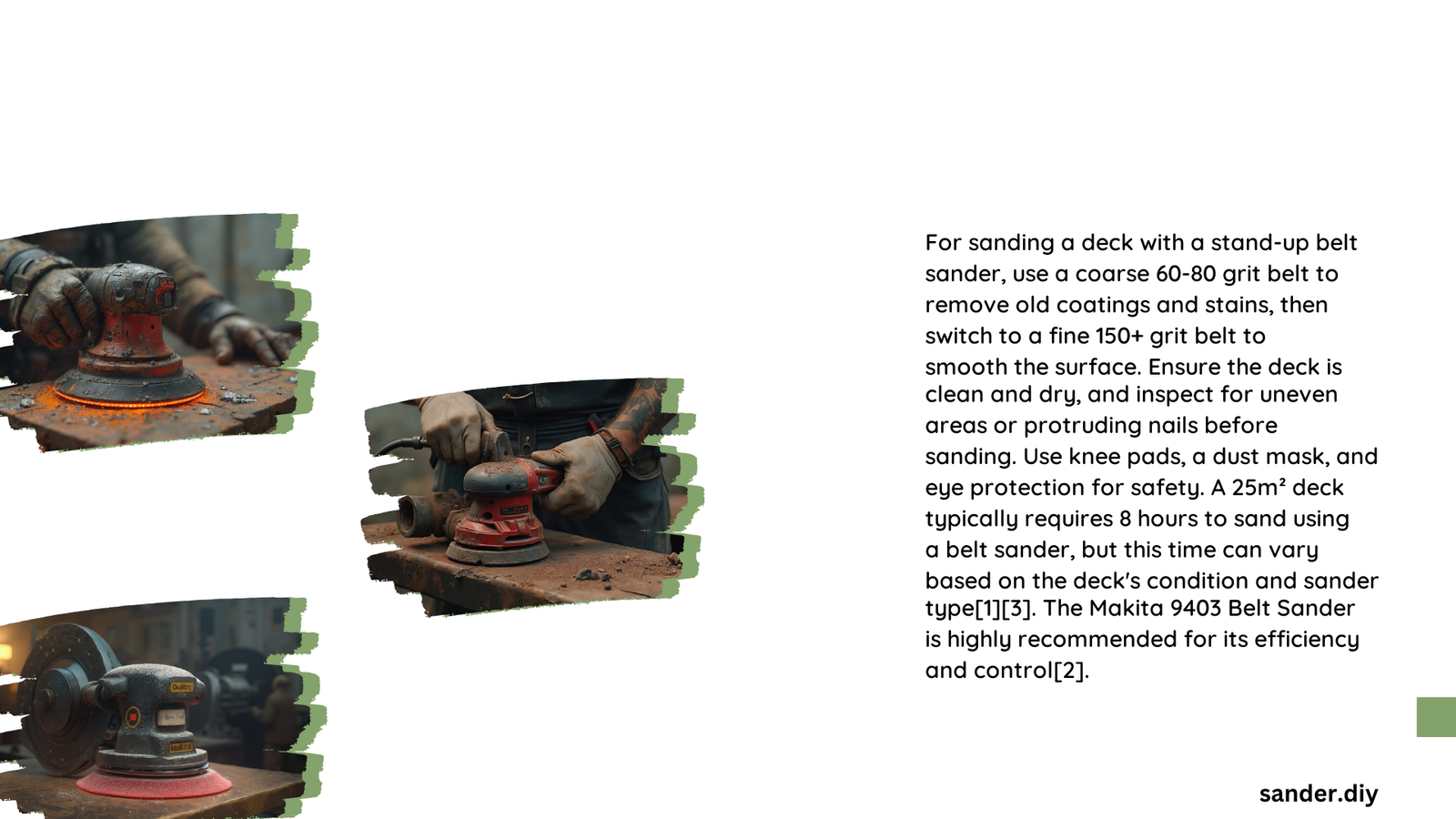Stand up belt sanders for decks are powerful tools designed for efficient sanding of large wooden surfaces. These sanders typically feature robust motors, high belt speeds, and wide sanding paths, making them ideal for deck restoration projects. While traditional handheld belt sanders are common, stand-up models offer improved ergonomics and coverage for extensive deck work. This guide explores the specifications, options, and techniques for using stand up belt sanders on decks.
What Are the Key Specifications of a Stand Up Belt Sander for Deck?
Stand up belt sanders for decks come with specific features tailored for large-scale sanding tasks:
- Motor Power: Typically 10-15 amps
- Belt Speed: Range of 500-1,500 feet per minute (FPM)
- Sanding Width: Common widths include 3-inch, 4-inch, and 6-inch belts
For deck sanding, a 4-inch wide belt often provides the best balance between efficiency and maneuverability.
Which Stand Up Belt Sander Models Are Best for Deck Sanding?

While true stand-up belt sanders specifically designed for decks are less common, there are excellent alternatives:
Floor Sanders
- Clarke EZ-8 Drum Sander
- Motor Power: 1.5 HP (approx. 12 amps)
- Belt Speed: 1,800 RPM
- Sanding Width: 8 inches
- Features: Adjustable height, dust collection system
- Price: $400-$600
- User Ratings: Generally positive for efficiency and ease of use
Handheld Belt Sanders (for smaller decks or detailed work)
- DeWalt DW758 7.5-Amp 4×36-Inch Belt Sander
- Motor Power: 7.5 amps
- Belt Speed: 1,300 FPM
- Sanding Width: 4 inches
- Features: Variable speed control, dust collection system
- Price: $150-$250
- User Ratings: Highly rated for power and durability
How to Use a Stand Up Belt Sander on a Wood Deck?
Follow these steps for effective deck sanding:
- Start with coarse grit sandpaper (36-40 grit for hardwood, 60 grit for softwood)
- Sand in the direction of the wood grain
- Adjust sander settings for proper speed and belt alignment
- Progress to finer grits (80-120) for a smooth finish
Grit Progression Table
| Wood Type | Starting Grit | Intermediate Grit | Finishing Grit |
|---|---|---|---|
| Hardwood | 36-40 | 80 | 120 |
| Softwood | 60 | 80 | 120 |
What Are Common Challenges When Using a Stand Up Belt Sander for Deck?
- Grooves and Uneven Sanding: Keep the sander moving to avoid creating deep grooves
- Dust and Debris: Use a dust collection system for cleanliness and safety
- Fatigue: Choose sanders with ergonomic designs to reduce user fatigue
Which Features Are Crucial for a Stand Up Belt Sander for Deck?
When selecting a stand up belt sander for deck work, consider these essential features:
- Ergonomic Design: Look for lightweight construction and vibration-reducing handles
- Weight and Ease of Use: Aim for sanders weighing 10-15 pounds for better maneuverability
- Safety Features: Secure trigger locks and automatic belt tracking systems
How Does Belt Width Affect Deck Sanding Performance?
Belt width plays a crucial role in sanding performance:
- 3-inch belts: Suitable for smaller decks or tight spaces
- 4-inch belts: Ideal balance of efficiency and control for most deck projects
- 6-inch belts: Best for large, open deck areas but may be harder to maneuver
What Safety Precautions Should Be Taken When Using a Stand Up Belt Sander for Deck?
- Wear protective gear (safety glasses, dust mask, ear protection)
- Ensure proper ventilation in the work area
- Regularly check and maintain the sander’s electrical components
- Keep the work area clear of obstacles and debris
How to Maintain a Stand Up Belt Sander for Deck Projects?
Proper maintenance ensures longevity and optimal performance:
- Clean the sander after each use, removing dust and debris
- Regularly inspect and replace worn belts
- Lubricate moving parts as recommended by the manufacturer
- Store the sander in a dry, clean environment
What Are the Advantages of Renting vs. Buying a Stand Up Belt Sander for Deck?
Consider these factors when deciding between renting and buying:
Renting
- Ideal for one-time or infrequent projects
- Access to professional-grade equipment
- No long-term storage or maintenance required
Buying
- Cost-effective for frequent use
- Convenience of having the tool on hand
- Ability to choose specific features and models
How to Choose the Right Sandpaper for a Stand Up Belt Sander on Deck Projects?
Selecting the appropriate sandpaper is crucial for effective deck sanding:
- Grit Selection: Start with coarse grits (36-60) for initial sanding, progress to medium (80-100) and fine grits (120-150) for finishing
- Material: Aluminum oxide sandpaper is durable and suitable for most deck woods
- Open vs. Closed Coat: Open coat sandpaper prevents clogging when sanding softwoods or resinous hardwoods
By following these guidelines and considering the specific needs of your deck project, you can effectively use a stand up belt sander to achieve professional-quality results in your deck restoration efforts.
References:
1. How to Sand a Deck – The Best Deck Sander & Sandpaper Grit
2. Belt Sander or Orbital Sander – DoItYourself.com Community Forums
3. How to Sand a Deck With an Orbital Sander | National Abrasives
